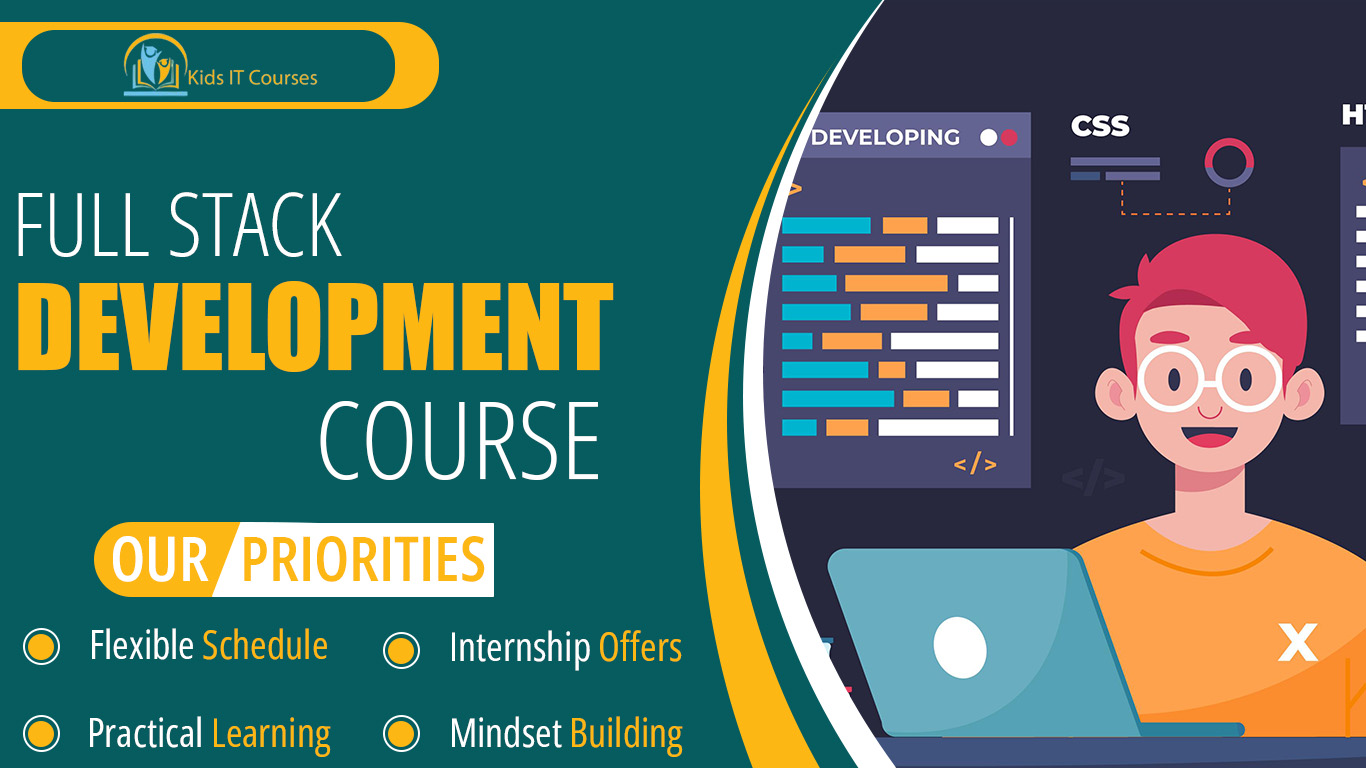
Full Stack Web Development Course for Kids
- This exciting course introduces kids to Full Stack Web Development, where they will learn how to create websites from start to finish.
- Full stack developers are capable of working on both the front end (what users see) and the back end (the logic and database).
- By exploring these two crucial aspects, kids will be able to build interactive, fully functioning websites and applications.
- This course empowers them to create their own digital experiences and prepares them for future tech opportunities!
Definition
Kids learn how to build both the look and the function of a website. It’s like learning to decorate a house and set up its electricity!
They explore different tools to build full websites. Each one adds style, action, or brainpower to the site.
- They plan how websites work step by step. It boosts their creativity and problem-solving skills.
Kids learn how clicking a button sends data behind the scenes. It teaches them how websites think and respond.
They build real projects they can see and use. Creating something cool makes learning exciting!
Kids try coding tools used in actual tech companies. They gain hands-on experience in web development.
Full stack skills are in high demand today. Learning them early gives kids a powerful head start in tech!
Importance
Kids learn how to build the whole website — what people see and what happens behind the scenes. It’s like learning to build both the outside and inside of a robot!
They understand how buttons, forms, and logins really work. This gives them a full picture of web development.
Full stack coding teaches kids how to think in steps and fix problems. It makes their brains sharper and stronger.
- Kids can build full websites, games, or mini apps by themselves. This gives them a big confidence boost!
They use HTML, CSS, JavaScript, and databases — just like pros. It gives them hands-on experience with real tech.
Kids design how their project looks and works. It builds imagination and smart thinking together.
Full stack skills are used in startups, tech companies, and big websites. Learning it young sets them up for amazing futures!
Advantages for Freelancing Purpose
Kids learn how to build both the design (frontend) and the brain (backend) of websites. They become all-in-one website creators!
- They use logic to make things work and creativity to make them look good. It helps balance both sides of the brain.
Kids learn HTML, CSS, JavaScript, and more. These are the same tools used by professional developers.
They understand how pages, buttons, and databases all connect. It’s like learning how to build and power up a robot!
Kids learn how to fix errors, test features, and plan projects. It trains them to think step-by-step.
They build their own websites, apps, and games from scratch. Seeing their work live makes them feel proud.
Full stack skills are in high demand around the world. Learning now gives kids a big head start in the tech world.
Session 1: Introduction to Full Stack Development
What is full stack development?
Difference between front-end and back-end
How websites and servers work
Tools we’ll use: HTML, CSS, JavaScript, Node.js
Session 2: HTML & CSS Basics (Front-End)
Create web pages using HTML
Style pages with CSS (fonts, colors, layout)
Build a personal “About Me” web page
Introduction to responsive design (mobile-friendly pages)
Session 3: JavaScript for Interactivity
What is JavaScript?
Variables, functions, and basic logic
DOM manipulation (clicks, popups, events)
Add animations and simple interactivity to websites
Session 4 : Front-End Mini Project
Build a mini portfolio or quiz app using HTML, CSS, and JavaScript
Learn file structure and debugging tips
Host your site using GitHub Pages
Session 5 : Introduction to Back-End Development
What is a server and how does it work?
Install and use Node.js + Express
Create your first server
Serve a basic HTML page from the backend
Session 6 : Working with Data (JSON & Forms)
Create and handle forms
Send and receive data with Express
Use JSON files to simulate databases
Build a feedback or comment form
Session 7 : Connecting Front-End & Back-End
Connect HTML forms to Node.js backend
Fetch data and display it dynamically
Intro to APIs and client-server communicatio
Session 8 : Final Project Week
Plan and build a full stack web app (e.g., blog, to-do list, portfolio)
Include front-end styling + back-end logic
Test and present your app
Upload project to GitHub and receive certificate
✅ Bonus Topics (Optional):
Intro to databases (MongoDB or Firebase)
Using Bootstrap or Tailwind CSS
Version control with Git and GitHub
Deploying apps online (Render, Netlify, or Replit)
